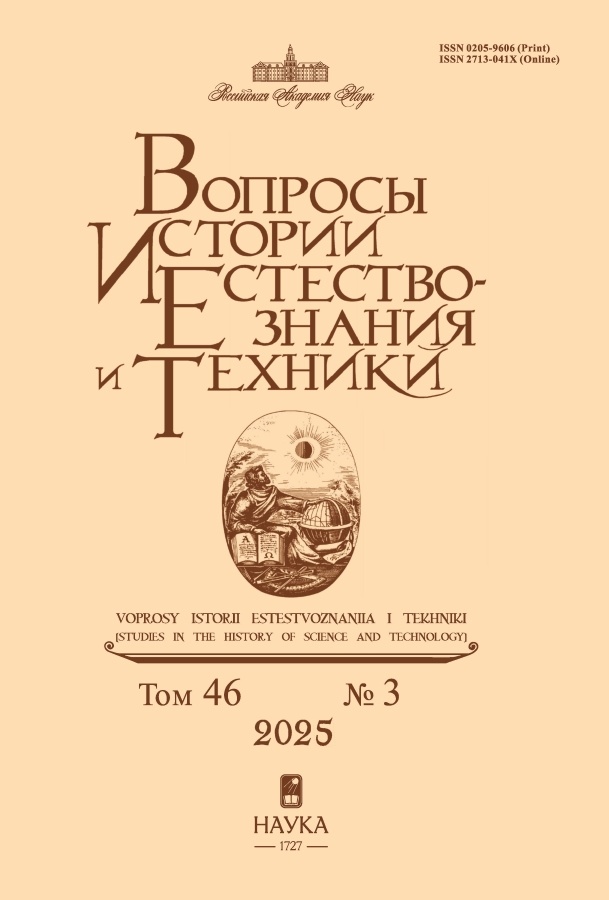How IBM Won: Changes in Government Policy Concerning the Development of Computing Technology in the USSR in the Second Half of the 1960s.
- 作者: Bodrova E.V.1, Kalinov V.V.2
-
隶属关系:
- MIREA – Russian Technological University
- National University of Oil and Gas “Gubkin University”
- 期: 卷 46, 编号 3 (2025)
- 页面: 511-523
- 栏目: Lessons from History
- URL: https://genescells.com/0205-9606/article/view/691753
- DOI: https://doi.org/10.31857/S0205960625030053
- EDN: https://elibrary.ru/uypmsh
- ID: 691753
如何引用文章
详细
The article examines a very relevant problem related to the formation of a Soviet government strategy for the development and production of computers in the second half of the 1960s. The novelty of the research is determined not only by the introduction of previously unpublished, declassified archival documents for scientific use, but also by solving the problem of identifying the factors that prompted the central authorities to switch to cloning American models. It is shown that, in 1967, leaning on the leading experts’ opinion, Soviet leadership acknowledged that all the measures taken earlier to accelerate the development and production of modern computers failed to produce the desired effect. The gap between the Soviet Union and advanced countries continued to grow. It is concluded that the analysis of the options proposed by various departments prompted the government to follow the well-trodden path and borrow American models. Among the factors that determined this decision were the prevalence of the departmental approach and the failure to recognize the importance of computer industry for the development of the country. Other options proposed by the leading scientists were ignored by the authorities.
作者简介
E. Bodrova
MIREA – Russian Technological University
Email: evbodrova@mail.ru
Prospekt Vernadskogo, 78, Moscow, 119454, Russia
V. Kalinov
National University of Oil and Gas “Gubkin University”
Email: kafedra-i@yandex.ru
Leninsky prospekt, 65, korp. 1, Moscow, 119991, Russia
参考
- Bodrova, E. V., and Kalinov, V. V. (2023) Razvitie vychislitel’noi tekhniki v pervoi polovine 1960-x gg.: popytki preodolet’ otstavanie [Computer Technology Development in the First Half of the 1960s: the Attempts to Overcome the Lag], Istoriia i sovremennoe mirovozzrenie, vol. 5, no. 3, pp. 81–89.
- Bodrova, E. V., Kalinov, V. V., and Efremenko, V. V. (2023) Gosudarstvennaia politika v sfere razvitiia vychislitel’noi tekhniki v 1950-e gg.: dostizheniia i blokiruiushchie faktory [State Policy in the Field of Computer Technology Development in the 1950s: Achievements and Blocking Factors], Istoriia i sovremennoe mirovozzrenie, vol. 5, no. 2, pp. 48–56.
- Bokarev, Iu. P. (2009) Tekhnologicheskaia voina i ee rol’ v geopoliticheskoi konfrontatsii mezhdu SSShA i SSSR [Technological Warfare and Its Role in the Geopolitical Confrontation between the USA and the USSR], in: Trudy Instituta rossiiskoi istorii. Moskva: Nauka, iss. 8, pp. 252–297.
- Malinovskii, B. N. (1995) Istoriia vychislitelʼnoi tekhniki v litsakh [The History of Computing Technology in Persons]. Kiev: Firma “KIT” and PTOO “A. S. K.”
- Moiseev, N. N. (2007) Kak daleko do zavtrashnego dnia... Svobodnye razmyshleniia, 1917–1993 [How Far Is Tomorrow… Free Thoughts, 1917–1993]. Moskva: Ekologiia i zhizn’.
- Pavlova, E. V. (comp.) (2021) Naidov-Zhelezov Kremen Georgievich [Naidov-Zhelezov Kremen Georgievich]. Naro-Fominsk.
- Prokhorov, S. P. (2023) Osnovopolagaiushchii vklad Akademii nauk v stanovlenie komp’iuternykh nauk i komp’iuternykh tekhnologii [The Fundamental Contribution of the Academy of Sciences to the Development of Computer Science and Computer Technology], Vestnik Rossiiskoi akademii nauk, vol. 93, no. 10, pp. 980–988.
- Shestakov, V. A. (2006) Sotsial’no-ekonomicheskaia politika Sovetskogo gosudarstva v 1950-e – seredine 1960-kh godov: dis. ... d-rf. ist. nauk [Socio-Economic Policy of the Soviet State in the 1950s – mid-1960s. Thesis for the Doctor of Historical Sciences Degree]. Moskva.
补充文件









